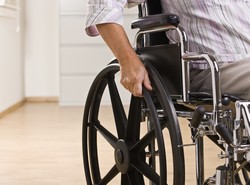Depressure pressure ulcers
PUs are caused by an impaired circulation of blood flow because of excessive pressure, shear or friction. Spinal cord injury (SCI) sufferers have an impaired vasomotor system and lack certain preventative natural mechanisms such as pain perception, or the ability to perform postural alterations to reduce local hyperaemia. Nearly half of all SCI sufferers develop a PU in the first five years of their trauma and up to 8 % will eventually die of complications. Although 95 % of all PUs are preventable, current devices are ineffective for their prevention. However, prognosis is excellent at early stages and PUs heal by themselves once the pressure has been removed. To facilitate this, the EU-funded PUMA(opens in new window) (Development of a non-invasive and portable tissue viability measurement and intelligent actuation system for the prevention and early detection of pressure ulcer risk at tetraplegic SCI users) project set out to develop a tilting wheelchair with an integrated monitoring system, a dynamic cushion and an electrostimulation system. The innovation behind this system was the use of a smart textile loaded with specific sensors, capable of measuring tissue viability and pressure on the buttocks. This triggered a repositioning of the sufferer’s posture to relieve the detected pressure and prevent PU development. In addition, through functional electrical stimulation, the PUMA device improved the muscular and vasomotor status of the SCI sufferer. The PUMA system was validated along each phase of design and development to ensure translation to SCI needs. Considering that treatment of PUs is difficult, costly and risky to patients, the proposed device offers a significant alternative for detecting PUs early and preventing them.







